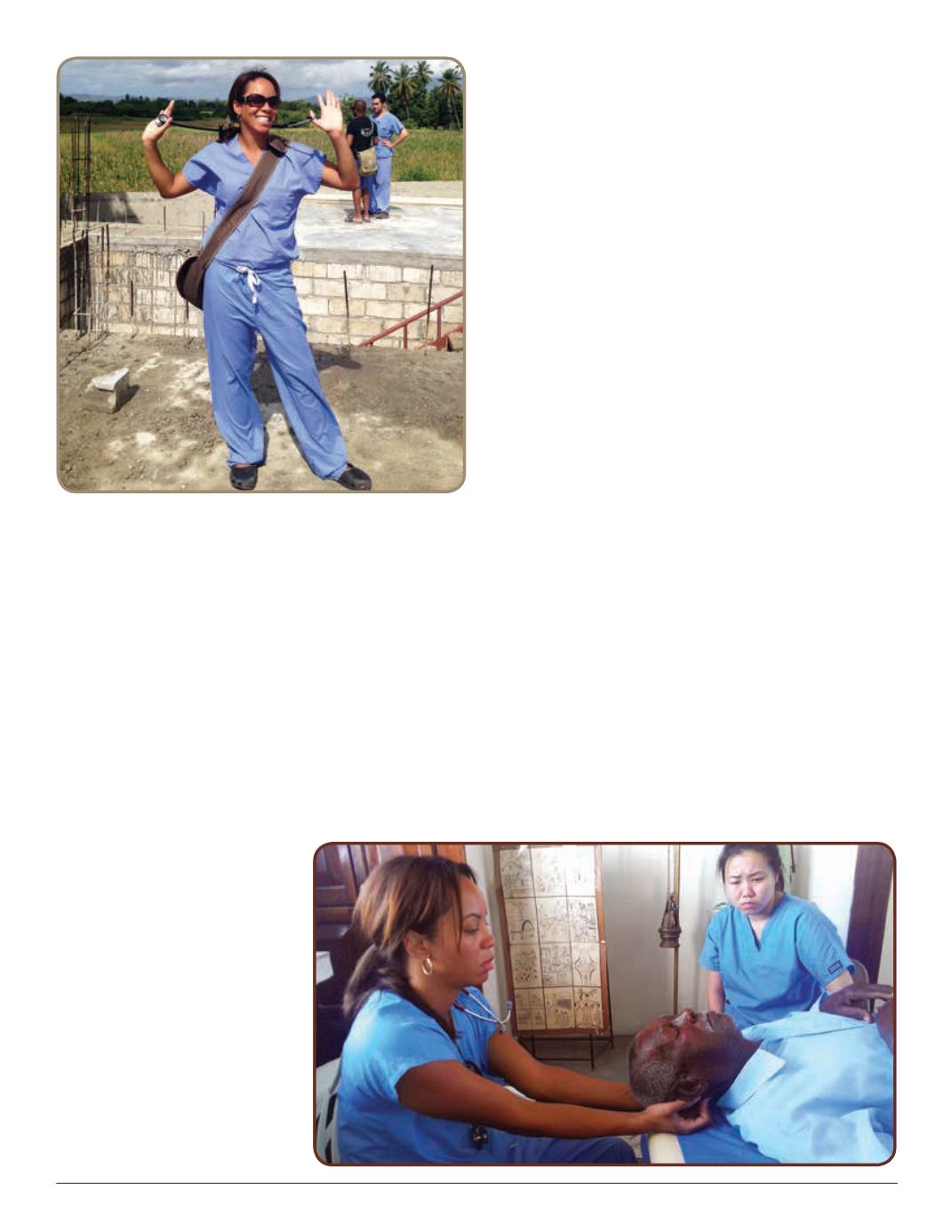
39
COM Outlook . Fall 2013
bending and walking. So there you have it. On day one
of work is when I stepped out on the proverbial limb and
reached deep into my pockets for what I hoped would be
the OMM
fairy dust
.
My fellow resident and D.O. comrade, Dr. Sabine Elisee
(’11), and our supervising attending, Dr. Marie Florent-
Carre (’04), and I had been seeing patients on something
similar to a massage table we used for writing notes and
performing physical exams. I looked over at Sabine, also
studying the medication list like it held some lost secret or
a map to hidden treasure, and we agreed to abandon the
drugs and start performing OMM wholeheartedly.
We could not have predicted how in that moment we
were on the verge of a monumental development. What
started off as one or two techniques grew by the end of the
trip to a standalone small consulting practice, with actual
referrals from other physicians
and a line of patients specifically
requesting OMM. The word on the
streets was out; there were “special
doctors” visiting Haiti that could
make pain disappear without
medication. It was amazing how
much I actually remembered from
a class I thought I had only periph-
erally tuned into, and how effort-
less performing OMM was once I
actually ventured to begin.
Our M.D. colleagues working
alongside us looked a lot like the
non devotees from class, at least
at first. It was hard to deny the
success our OMM achieved. Seeing the smiles on the pa-
tients’ faces, watching a limp improve, or a shoulder with
increased range of motion was all the encouragement we
needed to invest more time and techniques. It was not until
day four that I realized the significance of what we had
established, as our M.D. counterparts formed lines and ar-
gued over who was next for treatment from fellow resident
Omar Mubaidin, D.O. (’11) once all the patients were seen.
Not only was I changed by those days, I believe those
around me were as well. Long-term members of the Gas-
kov Clerge Foundation that have been traveling to Haiti
for years were buzzing about investing in OMM tables
and insisting that D.O.s always attend the mission trip go-
ing forward. Never had I felt better equipped or prouder
to be a D.O. We knew we had stirred the pot, so to speak,
when an M.D. attending said this about her D.O. col-
league: “I can’t wait to go back to ask him why he hasn’t
been doing OMM on our patients. That’s a shame.”
Just as the trip was closing and we were traveling
back to the airport on an over-packed, cramped bus fly-
ing around curves and bouncing up and down on gravel
roads rivaling even the best rollercoaster ride, my attend-
ing developed severe motion sickness. Hmm, why not
stick with what works? I started OA decompression and
myofascial release within the tight confines of the bus,
all to the ooh’s and aah’s of fellow passengers, and now
many converted devotees who thought I could fix just
about anything with the right technique.
Reflecting back, I do realize what occurred in Haiti was
extraordinary, both in time and in circumstance. Today’s
challenge is looking for ways to keep the magic alive here
on U.S. soil and to avoid reverting back to my hoary ways
of thinking. Finding ways to creatively incorporate OMM
into today’s clinical practice, which is so heavily dictated
by time constraints and burdened with administrative du-
ties, will be an ongoing challenge. I’m not too concerned,
though: The OMM
fairy dust
is powerful.
Proud OMM
convert:
Dr. Tracy
Romanello


